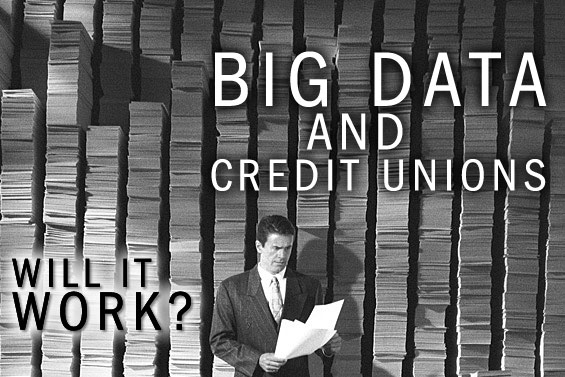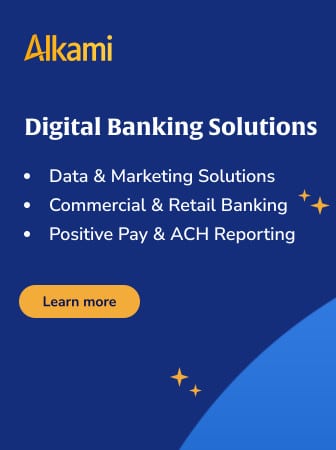Is big data too hairy and audacious to be a realistic goal for credit unions? Or will the promise of machine learning, artificial intelligence and cluster analyses become the norm for financial cooperatives?
With big data, the volume of input is so massive, many financial marketers find it bewildering if not downright intimidating. Nevertheless, retail behemoths like Amazon, Google and Walmart are milking big data for any customer insights that might help them capture more market share and serve consumers better.
Researchers from Filene, an industry think tank, harvested anonymous profile information and account records from five credit unions in the U.S. and Canada. The data encompassed some 500,000 credit union members and 250 million transactions over a five-year time frame, reported in a 10-dimensional space. Transaction amounts, account balances, credit scores, income and gender were among the variables examined for correlations.
Crunching a data set this massive requires a process called “machine learning,” a branch of artificial intelligence. Filene was able to tease out some simple patterns. Most notably, they found that consumers follow specific paths as they acquire different financial products at each stage in their lifecycle.
Philipp Kallerhoff, who holds a PhD in computational neuroscience, wrote a report for Filene on the research. In the report, Kallerhoff shows how financial institutions can mine transactional data to forecast consumer behavior, predict product lifecycles, improve profitability and reduce risk.
Reality Check: If it takes a doctor to figure out how to make big data work, it’s no wonder it scares so many financial marketers.

Creating A Community with CQRC’s Branch Redesign
Find out how SLD helped CQRC Bank to create the perfect harmony of financial services, local culture, and the human touch in their branch transformation.
Read More about Creating A Community with CQRC’s Branch Redesign

Getting Ready for Tomorrow: Practical Steps to Digital Maturity
This webinar explores practical steps to achieve digital maturity, tailored to the unique pace and needs of your institution.
Read More about Getting Ready for Tomorrow: Practical Steps to Digital Maturity
Predicting The Next Best Product
Using cluster analysis, Kallerhoff was able to determine the next best product a credit union member would acquire with 30% accuracy. For example, members move from simple products such as demand and savings accounts to revolving lines of credit and mortgages. Kallerhoff said these correlations appear to be stronger when you factor in a consumer’s specific transactional- and account history. Generally speaking, before someone adds new financial products, their balance‐to‐income ratio increases or their income drops suddenly. These types of changes are very reliable indicators of which kinds of products that will interest financial consumers in the near future.
When Kallerhoff tested the model, he found the prediction rate applied across all products and all credit unions participating in the study. Using this same method of analysis, he was also able to predict which products members would start out with when they joined a credit union, and the likelihood that they would leave.
This is all important information, but the next best product is the most valuable. This kind of insight could help financial marketers’ hone their onboarding and cross-selling strategies with razor sharp precision. Armed with data about which products people are mostly likely to acquire next would take all the guesswork and subjectivity out of a matrix direct marketing communications plan.
Read More: Is Banking Really Ready For Big Data?
Improved Targeting With Lending Offers
Big data can add another dimension to credit scores, allowing lenders to improve underwriting and use transaction information to take different risks on members than a standard credit score usually allows. Consumer behavior — such as which restaurants, grocery stores, and coffee shops someone frequents — can predict their credit. For example, someone who frequents the British Butcher Shoppe is very likely have a credit score of around 800, while those who shop at Save-On- Foods, on the other hand, very likely have a credit score of around 600.
Think about the possibilities. If you wanted to target qualified borrowers with a specific lending product, you wouldn’t even have to pull people’s credit reports. You’d just scour your transactional database looking for consumers who shop at the kind of stores that correlate with higher credit scores. You could easily see the number of loans approved and funded double, maybe triple what you typically see when targeting “blind.”
Read More: Big Data: Big Opportunity In Banking… Or Big B.S.?
Is Big Data an Unattainable Dream
Most financial marketers wrestle with the practicality and accessibility of big data. It sounds great in theory, but the thought of trying to wrangle a bazillion megagigs of transactional data into something that makes any sense scares the begeezus out of the marketing department. Sheesh, with the IT limitations they face today, they can barely tell you how many people filled out applications in last month’s loan promo. On the data mining expressway, big data is like 20 miles down the road while most institutions are still on the on-ramp.
When it comes to data analytics, many banks and credit unions are still learning to walk and chew gum at the same time. They just aren’t that sophisticated — something plenty will readily admit to. It’s not even their fault really. Smaller financial institutions are saddled with whatever IT limitations their core system has and there isn’t much they can do about it. Many banks and credit unions have cobbled a mess of systems and third-party solutions together — a lending system acquired in a merger, a stand-alone credit card system, etc. That’s why financial marketers moan and groan about howmuch data at their institution is “siloed.” They can’t even harness the existing data available to them,
Reality Check: The first step to making big data work is pooling all these disparate data sources together, and that’s something most banks and credit unions haven’t been able to solve in the last 20 years.
Filene says it’s too early for anyone to dismiss big data. While individual credit unions may not have the resources of a corporate giant, advances in data storage and software tools mean that credit unions can start using similar technology to derives insights from big data.
You can download the entire 27-page report,“Big Data & Credit Unions: Machine Learning in Member Transactions,” at Filene’s website (instant download, no registration required). Just be warned: It’s heady stuff.








